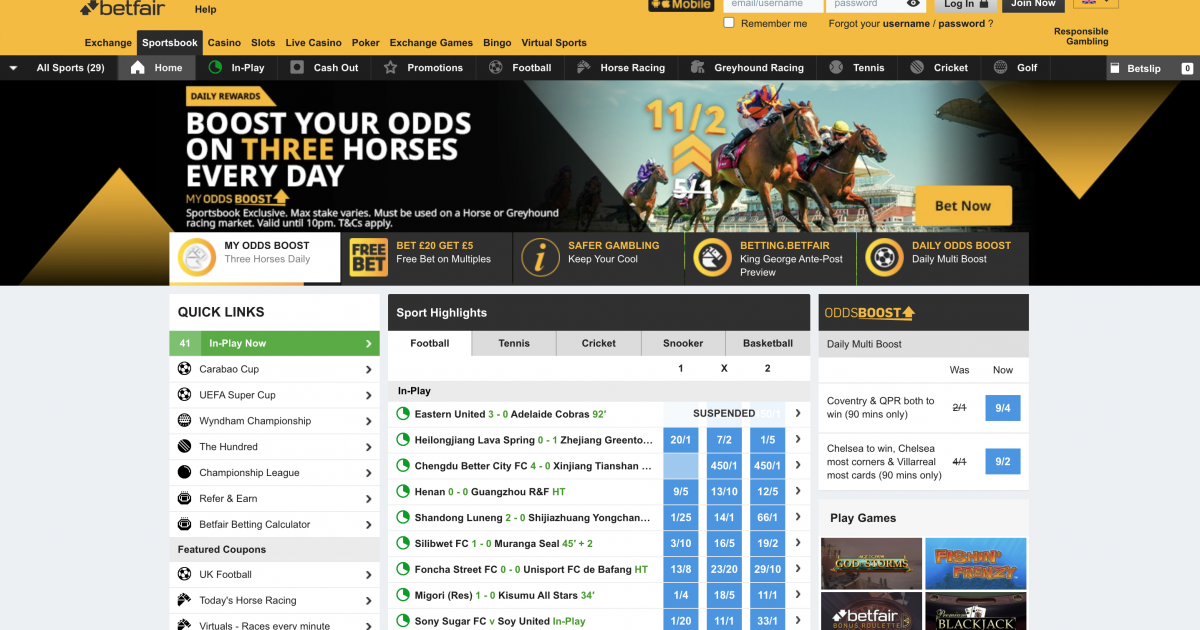
Unlocking the Odds: The Highest RTP Slots in Gaming History
When it comes to slot gaming, return-to-player (RTP) percentages can make a significant difference in…

If you’re interested in online sports betting, you’ve likely heard of Betfair. It’s a popular platform that offers a variety of betting options, including backing and laying. These two strategies are fundamental to betting on Betfair, and understanding them is essential if you want to be a successful bettor. In this article, we’ll explain what backing and laying are and how to use them effectively.
Before we dive into backing and laying, let’s take a brief look at Betfair. It’s an online betting exchange that allows you to bet against other users instead of against the bookmaker. This means that Betfair acts as a middleman, facilitating the bets and taking a commission on the winnings. The platform offers a wide range of sports and events to bet on, and the odds are set by the users themselves, not the bookmaker.
Backing is the traditional form of betting. When you back a selection, you’re betting on it to win. For example, if you back a football team, you’re betting that they’ll win the match. If they do win, you’ll receive a payout based on the odds you backed them at.
To back on Betfair, you simply select the selection you want to back and enter the amount you want to bet. The platform will then match your bet with someone who is laying the same selection. If your selection wins, you’ll receive your payout.
Calculating your potential payout is simple. You just need to multiply your stake by the odds. For example, if you bet $10 on a selection with odds of 2.0, your potential payout would be $20 ($10 x 2.0).
Backing is the traditional way of betting where you place a bet on an outcome to happen. For example, if you back a horse to win a race, you will make a profit if the horse wins, and lose your stake if it loses. In other words, backing is betting ‘for’ something to happen.
Laying is the opposite of backing, and it involves betting on an outcome not to happen. For example, if you lay a horse to win a race, you will make a profit if the horse loses, and lose your stake if it wins. In other words, laying is betting ‘against’ something to happen.
Backing on Betfair is straightforward. You choose the selection you want to back and place your bet at the available odds. The odds on Betfair are determined by the demand for that particular selection. The more money being placed on a selection, the lower the odds will be, and vice versa.
Laying on Betfair is the opposite of backing. You choose the selection you want to lay and offer odds that other customers can accept. If someone accepts your odds, they are effectively backing that selection to lose. You will then be liable to pay out their winnings if that selection loses.
The Betfair market is different from traditional bookmakers because it allows you to both back and lay bets. This means that there are two types of customers on Betfair: backers and layers. The odds are determined by the demand from both types of customers. If there are more people backing a selection than laying it, the odds will shorten, and vice versa.
There are several strategies you can use when backing on Betfair. One popular strategy is to back a selection at high odds and then lay it at lower odds to guarantee a profit. This is known as ‘trading out’ and is a popular technique used by many successful Betfair traders.
Another strategy is to look for ‘value’ bets. This involves finding selections that you believe have a higher chance of winning than the odds suggest. For example, if a horse has odds of 10/1, but you believe it has a 20% chance of winning, it represents value, and you should consider backing it.
You can also use form analysis to identify horses or teams that are in good form and likely to perform well. This can help you make more informed decisions when placing bets.
Laying on Betfair can be more complicated than backing, but it can also be more profitable. One popular strategy is to lay selections that are overvalued. This involves identifying selections that you believe have a lower chance of winning than the odds suggest. For example, if a horse has odds of 2/1, but you believe it has a 30% chance of winning, it may be a good lay bet.
You can also look for opportunities to ‘trade out’ of lay bets. This involves laying a selection at high odds and then backing it at lower odds to guarantee a profit.
Both backing and laying have their advantages and disadvantages. Backing is generally seen as less risky than laying, as you only lose your stake if your selection loses. Laying, on the other hand, can be more profitable, but it comes with greater risk. If your selection wins, you will be liable to pay out the winnings to the person who backed it.
To be successful at backing and laying on Betfair, it’s essential to have a solid strategy and stick to it. You should also be disciplined and manage your bankroll carefully. This means only betting what you can afford to lose and not chasing losses.
You should also keep an eye on the market and be prepared to adjust your strategy if necessary. Finally, it’s essential to have a good understanding of the sport or event you are betting on, as this can help you make more informed decisions.
Bankroll management is a crucial aspect of successful sports betting on Betfair. This means only betting what you can afford to lose and not chasing losses. You should also divide your bankroll into smaller units and only bet a small percentage of your bankroll on each bet.
Backing is the standard way of beating and laying is backing something to lose instead of win basically, but you act as the bookmaker and take on the liability of the payout if the person that backed it wins.
Be careful when laying and make sure you calculate your liability (what you have to payout if the selection wins and does not lose) failing that it may be better to try a football tipster that specialises in laying and backing type bets, we hope you enjoyed this betting guide.